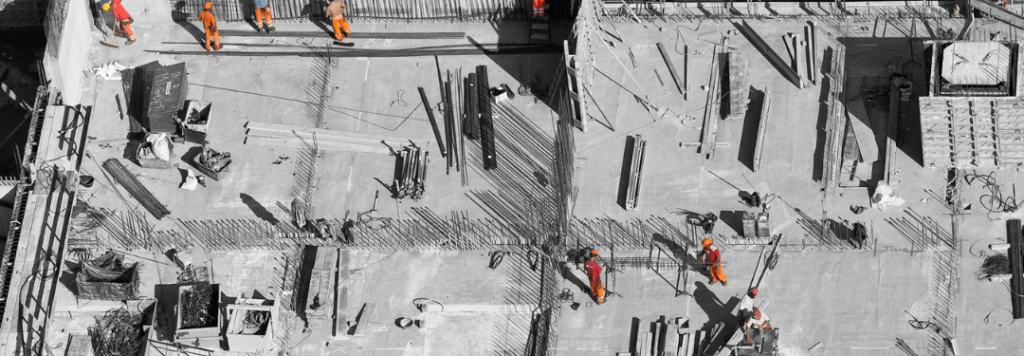In manufacturing and construction, prioritizing worker safety is non-negotiable. A critical component of this safety protocol is respirator fit testing — a process ensuring the effectiveness of respiratory protection equipment. In this guide, we’ll explore the key facets of Respirator Fit Testing tailored to the specific needs of manufacturing and construction.
OSHA Respiratory Protection Standard: A Foundation for Safety
The OSHA Respiratory Protection Standard provides the guidelines for Respirator Fit Testing, establishing the framework for maintaining a worker’s health and wellness when they are at risk of breathing in harmful airborne particles. To better understand it, read our Employer’s Guide to the Respiratory Protection Standard.
Understanding Respirator Protection Plans
As a requirement of the OSHA Respiratory Protection Standard, organizations must have a written Respirator Protection Plan. This plan outlines how your organization is going to implement and adhere to respiratory protection. For the key components that you need to include in a written plan, see our Respirator Protection Plan Guide.
Identifying Manufacturing and Construction Jobs Requiring Respirator Fit Testing
Understanding which roles demand Respirator Fit Testing is helpful. Jobs with potential exposure to airborne contaminants, such as welding, painting, or tasks involving dust-producing materials, necessitate respirators, which means your business is required to do respirator fit testing.
Initial Respirator Fit Testing for New Hires
As you onboard new employees, ensuring the proper fit of respiratory protection equipment is paramount. The initial Respirator Fit Testing process involves several key steps:
1. Select Appropriate Respirators
Choose the right type of respirators, such as N95 masks, based on the specific hazards present in the workplace.
2. Conduct Medical Evaluations
Medical evaluations are a pre-requisite to a respirator fit test, meaning they must be completed BEFORE fit testing. Online medical evaluations can streamline this process and have several benefits over traditional paper medical evaluations, as outlined in this blog post.
3. Schedule Fit Testing
Arrange for respirator fit testing sessions, ensuring that they occur before employees are exposed to respiratory hazards.
4. Conduct Fit Testing
Employ qualitative or quantitative fit testing (see more details below) to assess the respirator’s effectiveness in creating a secure seal.
Requirements for Ongoing Respirator Fit Testing
Not only do you have to fit test employees before they start, but you also have to conduct ongoing respirator fit testing. The minimum standard is annually, but if someone experiences other things that could impact the fit and seal of the respirator, then they need to be fit tested again. This includes things like weight loss or gain, cosmetic surgery, addition or removal of dentures, facial hair, and changes of mask type.
Types of Respirator Fit Testing
There are different ways of conducting respirator fit testing. Which method you use should be based on your industry and the type(s) of masks being tested.
Quantitative Fit Testing
Utilizing instruments, a quantitative fit test (QNFT) measures the actual amount of leakage into the respirator. Quantitative fit testing is the only type approved for full-face masks, but can also be used on half-face masks.
Qualitative Fit Testing
A Qualitative fit test (QLFT) relies on the individual’s ability to taste or not taste a test agent to determine the adequacy of the respirator seal. Qualitative fit testing can ONLY be used on half-face masks.
Respirator Fit Testing Kit
Our Fit Kit™ is a DIY fit test kit for facilitating fit testing easily and accurately. Not only do you get all of the testing equipment with your Fit Kit purchase, but we also train you on how to use it, and you get access to our Respirator Fit Testing portal (more on that below).
The Importance of Record-Keeping
As part of the OSHA Respiratory Protection Standard, employers are required to keep detailed respirator fit testing records. Should you ever face an OSHA audit, good record-keeping is what will help you avoid fines and penalties, because it proves you’re compliant. This was a pain point many companies faced, which is what inspired us to create the Respirator Fit Testing Portal. The Mobile Health Respirator Fit Testing Portal can handle all necessary record-keeping in an OSHA- and HIPAA-compliant manner, and is available to any Mobile Health client who uses any of our respirator fit testing services.
Help with Respirator Fit Testing
As you can see, there’s a lot that goes into respirator fit testing. With a full range of respirator fit testing services, we can help you create a systemic approach, so you can ensure not only compliance and the avoidance of OSHA fines, but also the ongoing safety and well-being of your workforce. Contact us with your needs, and we’ll be in touch.
-
 Written by:
Written by:
Tricia Chen-Weis, RNTricia Chen-Weis is a seasoned healthcare professional with a passion for operational excellence and patient care. Joining Mobile Health in August 2019, Tricia quickly made her mark improving patient care and clinical operations as Site Manager in Mobile Health’s 36th Street and Staten Island location. With a bachelor's degree from the University of The West Indies and a nursing degree from Monroe College, Tricia's educational foundation provided her with the knowledge and skills necessary to excel in the healthcare industry. Prior to her tenure at Mobile Health, Tricia's career journey encompassed roles in business and healthcare, including positions as a purchasing agent/buyer and Practice Administrator. In her current role as Director of Clinical Operations, Tricia oversees all six of Mobile Health’s owned and operated NYC clinics, their operations, and staff, ensuring the seamless delivery of top-tier occupational healthcare services to clients. Since assuming this role in January 2024, Tricia has demonstrated exemplary leadership, fostering a culture of teamwork and collaboration among her team members. With a commitment to continuous improvement, Tricia looks forward to further growing and enhancing Mobile Health's operations, ensuring the organization's continued success in delivering exceptional care to its clients.
